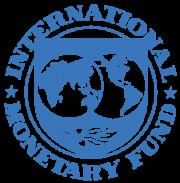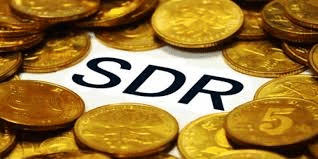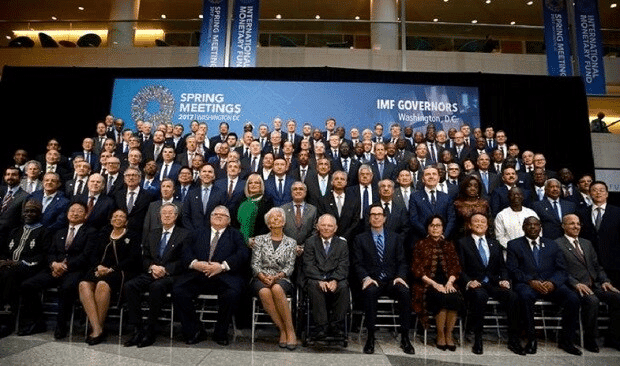IMF & World Bank | Indian Economy for UPSC CSE PDF Download
Introduction
The International Monetary Fund (IMF) is an organization of 190 countries, working to foster global monetary cooperation, secure financial stability, facilitate international trade, promote high employment and sustainable economic growth, and reduce poverty around the world.
Founded in 1944, the IMF aims to create a stable and prosperous global economy by providing policy advice, financial support, and technical assistance to its member countries.
History of IMF

- After World War I, numerous countries attempted to revert to the old gold standard during the 1920s and 1930s, but this endeavor was largely unsuccessful.
- To avoid repeating such errors, 44 nations convened at the United Nations Monetary and Financial Conference in Bretton Woods, New Hampshire, USA, from July 1 to 22, 1944.
- During this conference, the IMF was established to promote economic and financial cooperation among its members, with the primary objective of fostering and balancing global trade growth.
Objectives of IMF
- To promote international monetary cooperation by offering a permanent platform for consultation and collaboration on monetary matters.
- To support the expansion of international trade, aiming to maintain high levels of employment and real income while developing the productive resources of all members as a fundamental economic policy objective.
- To encourage exchange stability by maintaining orderly exchange arrangements among members and preventing competitive devaluations.
- To assist in establishing a multilateral payment system for current transactions between members and eliminating foreign exchange restrictions that hinder global trade.
- To build confidence among members by making the Fund's resources accessible to them under appropriate safeguards, allowing them to address balance of payments challenges without resorting to harmful measures.
- To diminish the duration and severity of imbalances in the international balance of payments of members.
Organisation and Structure of IMF
- The Fund is headquartered in Washington, USA, and comprises a Board of Governors, an Executive Board, a Managing Director, a Council, and a staff.
- The Executive Board holds the most significant power within the Fund.
- Every two years, fifteen Executive Directors are elected by other members based on constituencies, typically following geographical lines.
- The Executive Directors choose a Managing Director, who is usually a prominent politician or international official.
The Fund and It's Quotas
- The Fund operates a General Account funded by quotas allocated to its member countries. These quotas, determined when a country joins the Fund, set the parameters for its subscription size, voting power, and drawing rights.
- At the inception of the IMF, members were required to pay 25% of their quota in gold or 10% of their net official holdings of gold and US dollars, whichever was lower. The remaining 75% had to be provided in the country's own currency, held in its central bank.
- In April 1978, the Fund was delinked from gold, and the practice of maintaining gold reserves with the Fund was discontinued.
- To meet the financial requirements of the Fund, quotas are reviewed and adjusted every five years. Decisions regarding quota changes require an 85% majority of the total voting power of the Fund's members.
Special Drawing Rights (SDRs)

- In response to the need for improved international liquidity, the IMF introduced Special Drawing Rights (SDRs) in 1970, initially conceived as paper gold. SDRs were established as unconditional reserve assets to enhance global reserves, following the First Amendment to the Fund's Articles of Agreement in 1969.
- SDRs are allocated to member countries based on their Fund quotas, although the allocation process may vary depending on specific IMF policies and economic conditions. The Special Drawing Account oversees this allocation.
- Initially, countries used SDRs as part of their reserves, converting them into currencies during balance of payments challenges. One SDR was originally equivalent to 0.888671 grams of gold, roughly equal to one US dollar. Following the abandonment of the par value system in 1973, efforts were made to stabilize the value of the SDR.
- After the Second Amendment of the Fund's Articles in 1978, the SDR was established as an international unit of account. To streamline its valuation, the number of currencies in the SDR basket was reduced to five in January 1981, and the SDR's value has been adjusted every five years since January 1, 1986.
- The SDR functions as an international unit of account, with its value expressed in the Fund's Special Drawing Account. All currencies in the Fund's General Account are valued in SDR. As an international monetary asset, the SDR is held in the reserves of central banks and governments to manage deficits or surpluses in their balance of payments.
- The Fund expresses all its transactions, including loans, repayments, liquid reserves, and capital, in SDR. Many countries are now pegging their currencies to the SDR.
Credit Branch
- Credit Tranches. These are the parts of a member's quota that can be accessed without strict conditions. There are four tranches, each allowing withdrawals up to 25% of a member's quota.
- Special Drawing Rights (SDRs). SDRs are an international reserve asset created by the IMF. Members can use SDRs to access additional funds from the IMF.
- Enhanced Structural Adjustment Program (ESAP). This is a program that allows members to borrow more from the IMF to support structural adjustments in their economies.
India and the IMF
- Compensatory Financial Facility (CFF) was introduced in 1963 and updated in 1975 to help with balance of payments (BoP) issues caused by temporary drops in export income due to factors outside the member's control.
- Buffer Stock Facility (BSF) was established in 1969 to support member countries in financing commodity reserves.
- This facility is equal to 50% of the borrowing member's quota.
- Extended Financing Facility (EFF) was created in 1974, allowing the Fund to provide larger loans than the typical quotas, helping member countries to manage BoP deficits over longer periods, up to 10 years.
Critical Appraisal of the Fund's Working
- The IMF has been effective as an international monetary organization.
- It has provided various currencies to different nations to help them adjust their BoP over extended periods. Both developed and developing nations have widely used its resources.
- It has attempted to tackle international liquidity problems by modifying its Articles of Agreement.
- This demonstrates its ability to adapt to changing global economic conditions.
- However, the IMF faces criticism for several reasons:
- A conservative approach: The Fund has maintained strict lending conditions and high interest rates.
- Conditionality practices. Over the last thirty years, the Fund has established conditions that countries must meet to receive loans. Before the 1970s, the focus was on reducing spending to correct BoP imbalances.
- In the 1970s, these conditions expanded to require countries to reflect on the causes of their BoP issues and reassess their economic priorities and social and political goals. In March 1979, new guidelines were introduced for regularly reviewing member countries' experiences with adjustment programmes funded by the IMF.
- A secondary role as a monetary agency: The Fund has mainly played a supportive role rather than a central role in international monetary relations.
- Discriminatory policies. The Fund has been accused of favouring developed countries while discriminating against developing nations.
Members

- India is a founding member of the International Monetary Fund (IMF), having signed the Fund Agreement on December 27, 1945.
- Until 1970, India held the fifth-largest quota in the IMF, which allowed it to appoint a permanent Executive Director.
- After quota increases following May 1970, India's quota was surpassed by those of Japan, Canada, and Italy.
- India has been a major beneficiary of fund assistance from the IMF.
- As an IMF member, India is also involved with the World Bank, which has provided financial support for various development projects in the country.
- The IMF provides advisory support to India through a team of four or five economists who visit the country to discuss balance of payments and exchange rate issues with Indian officials.
- During these visits, the economists suggest measures related to monetary, fiscal, and other policies to address these issues.
- The International Bank for Reconstruction and Development (IBRD), commonly known as the World Bank, was established in 1945 as part of the Bretton Woods Agreement in 1944. Its primary purpose was to facilitate the transition from a wartime to a peacetime economy, and it is a sister institution of the IMF.
- The IBRD promotes private foreign investment by providing guarantees or participating in loans and other investments made by private investors. When capital is not available on reasonable terms, the IBRD uses its own resources or borrowed funds to supplement private investment.
Membership in the IMF and World Bank
- IMF and World Bank Membership: All members of the International Monetary Fund (IMF) are also members of the World Bank.
- Resignation and Loan Repayment: If a country decides to resign from its membership, it is required to repay all loans, along with interest, by the specified due dates.
- Financial Loss Liability: In the event that the World Bank incurs a financial loss in the year a member country resigns, the departing member must pay its share of that loss upon demand.
- Governing Body: The Board of Governors serves as the highest governing body of the World Bank.
- Appointment of Governors: Each member country appoints one Governor to the Board and also has an Alternate Governor, with the number of votes determined by the country’s financial contribution to the Bank.
Capital Structure of the IBRD
- Initial Capital: The International Bank for Reconstruction and Development (IBRD) was established with an authorized capital of $510 billion, divided into 100,000 shares of $5.1 million each. However, only $59.4 billion of this capital was actually subscribed at the outset.
- Success in Objectives: The IBRD has been successful in fulfilling its primary objectives of reconstruction and development, providing support to both developed and developing countries in their growth efforts.
- Increased Lending: Since the 1970s, the IBRD has significantly increased its lending to developing countries, focusing on projects aimed at improving infrastructure, productivity, and living standards.
- High Charges: Critics argue that the World Bank imposes high-interest rates on loans, along with annual commitment fees on unused balances and a front-end fee. While these rates have decreased from previous levels, they are still considered substantial.
- Inadequate Support: The Bank has faced criticism for not fully addressing the financial needs of developing countries, leaving some projects underfunded.
- Faulty Lending Policy: The lending process has been criticized for its flawed evaluation of a borrowing country's capacity to repay before granting a loan. This can result in harsh and unfair conditions for poorer countries that require significant financial assistance.
- Conditionalities: Since the introduction of the Structural Adjustment Facility (SAF) in 1985, loan terms have become stricter. Borrowing countries are now required to follow an action program outlined in the Letter of Development Policies, which includes measures such as open trade, public policy reforms, improved public investment planning, and better management of public enterprises. The second tranche of SAF is released only after a thorough review of the reform programs with set deadlines.
India and the World Bank
- Significance of Relationship: India’s relationship with the World Bank is crucial for its development trajectory. The Bank plays a vital role in providing financial resources and expertise to support India’s development goals.
- Project Financing: The World Bank finances a variety of projects in India aimed at enhancing infrastructure, such as building roads, bridges, and energy facilities, as well as improving public services like education and healthcare. These projects are essential for India’s economic growth and social development.
World Bank Support to India
India is a founding member of the World Bank and held a permanent position on its Board of Executive Directors for many years.
The World Bank has been assisting India in its planned economic development through various means, including:
- granting loans
- conducting field surveys
- providing expert advice
- training Indian personnel at the Economic Development Institute (EDI)
- A Chief of Mission represents the World Bank in New Delhi.
- Since August 1959, India has been the largest recipient of World Bank assistance.
The World Bank has supported India in various projects, including:
- development of ports
- oil exploration, including the Bombay High area
- gas power projects
- aircraft development
- production of coal, iron, aluminium, and fertilisers
- railway modernisation
- technical assistance
- industrial development finance
- cooperation in various initiatives
The World Bank also played a role in helping India resolve its river water dispute with Pakistan.
- The Aid India Consortium consists of 14 member countries and six major multilateral institutions, including Austria, Belgium, Canada, Denmark, France, Germany, Norway, Sweden, the U.K., the USA, and Switzerland.
- The consortium provides aid to India for its development plans at the request of the World Bank.
Recent Developments
1. IMF Quota and Governance Reforms
The 16th General Review of Quotas (2023, effective 2024) increased IMF quotas by 50% to ~$1 trillion, enhancing global financial stability.
- India’s Quota: Rose to 3.1% (from 2.7%), with a voting share of 3%, reflecting India’s $3.9 trillion GDP (2025).
- Governance: The Executive Board expanded to 25 Directors, with increased representation for emerging economies. The 2024 reforms lowered the veto threshold to 70% for certain decisions.
- India’s Role: India pushed for a new quota formula in 2024, emphasizing GDP and trade, as voiced at the G20.
Example: India’s increased quota strengthens its influence, evident in its opposition to Pakistan’s $7 billion IMF bailout (May 2025) over misuse concerns.
2. IMF Lending Facilities
New IMF facilities address climate, health, and food security, replacing outdated programs like ESAP and CFF.
- Resilience and Sustainability Facility (RSF, 2022): Supports climate/health crises, with $50 billion allocated by 2024. India uses RSF technical assistance for net-zero by 2070.
- Surcharge Reform (2024): Reduced borrowing costs for low-income countries (LICs), benefiting 70 nations.
- Precautionary and Liquidity Line (PLL): Supports stable economies, with $20 billion disbursed in 2024.
Example: RSF’s climate focus aids India’s PM Suryaghar Yojana, aligning with Vision 2047’s sustainability goals.
3. World Bank Projects in India
The World Bank’s 2023–25 commitments focus on green energy and urban development, moving beyond 1970s projects like Bombay High.
- Green Energy: $5.5 billion for PM Suryaghar Yojana (2024), supporting 100 million solar rooftops.
- Urban Development: $2 billion for AMRUT 2.0 (2021–26), enhancing city infrastructure.
- Loan Status: India, an IBRD-only borrower since 2014, receives ~$3 billion annually (2025).
Example: PM Suryaghar Yojana’s solar subsidies reduce energy costs, supporting rural development and Vision 2047.
4. MDB Evolution Framework
The 2024 G20-endorsed MDB Evolution Framework, driven by India’s 2023 G20 Presidency, reforms IMF/World Bank operations.
- Lending Increase: $200 billion annually by 2030, with $50 billion for India’s green projects (e.g., Green Hydrogen Mission).
- Private Sector: Emphasizes InvITs and PPPs for infrastructure financing.
- India’s Leadership: India’s G20 proposals shaped the framework, prioritizing climate and digital finance.
Example: The framework’s $50 billion for India supports 500 GW renewable capacity by 2030.
5. Climate Finance Initiatives
IMF and World Bank prioritize climate finance, critical for India’s net-zero by 2070 goal.
- IMF RSF: Provides technical assistance for India’s carbon credit framework (1,000 projects, 2024).
- World Bank CIF: $1.5 billion for India’s renewables (2024), supporting PM Suryaghar Yojana.
- 2025 Target: Spring Meetings set $500 billion for global climate finance by 2030.
Example: CIF’s funding accelerates India’s 500 GW renewable target, aligning with Budget 2024–25.
6. Digital Economy and Fintech
IMF and World Bank support India’s $300 billion digital economy (2024), absent in the document.
- IMF CBDC Handbook (2024): Guides India’s Digital Rupee (10 million users, 2024).
- World Bank Digital Partnership (2025): Supports UPI (150 billion transactions, 2024) and ONDC (10 million monthly transactions).
- G20 Crypto Framework: India’s 2023 G20 proposal for global crypto regulation, adopted in 2024.
Example: UPI’s integration with World Bank projects enhances DBT efficiency (₹34 lakh crore transferred, 2024).
7. Debt Sustainability and LICs
India plays a key role in addressing global debt distress, with 50% of LICs at risk (IMF, 2024).
- Joint Statement (2024): India co-led $20 billion African debt restructuring via the Common Framework (2021–25).
- PRGT Contribution: India rechanneled $1 billion in 2021 SDRs to LICs (2024).
- IMF Focus: Enhanced debt sustainability analyses for 70 LICs (2025).
Example: India’s debt relief leadership supports Vision 2047’s Global South advocacy.
8. India’s Geopolitical Influence
India’s 2025 leadership in global finance shapes IMF/World Bank policies.
- G20 Presidency (2023): Drove MDB reforms and climate finance priorities.
- BRICS Summit (2024): Proposed New Development Bank expansion, rivaling World Bank’s IDA.
- Quad Grants: Secured $1 billion in World Bank tech grants (2024) for AI and semiconductors.
- IMF Bailout Opposition: India opposed Pakistan’s $7 billion IMF bailout (May 2025), citing misuse risks.
Example: India’s BRICS leadership supports Atmanirbhar Bharat, reducing reliance on Western finance.
|
108 videos|431 docs|128 tests
|
FAQs on IMF & World Bank - Indian Economy for UPSC CSE
| 1. What is the role of the IMF and the World Bank in the global economy? |  |
| 2. How do the IMF and the World Bank differ in terms of their objectives and activities? |  |
| 3. How do countries become members of the IMF and the World Bank? |  |
| 4. Can countries borrow money from the IMF and the World Bank? |  |
| 5. How do the IMF and the World Bank address the needs of developing countries? |  |

















